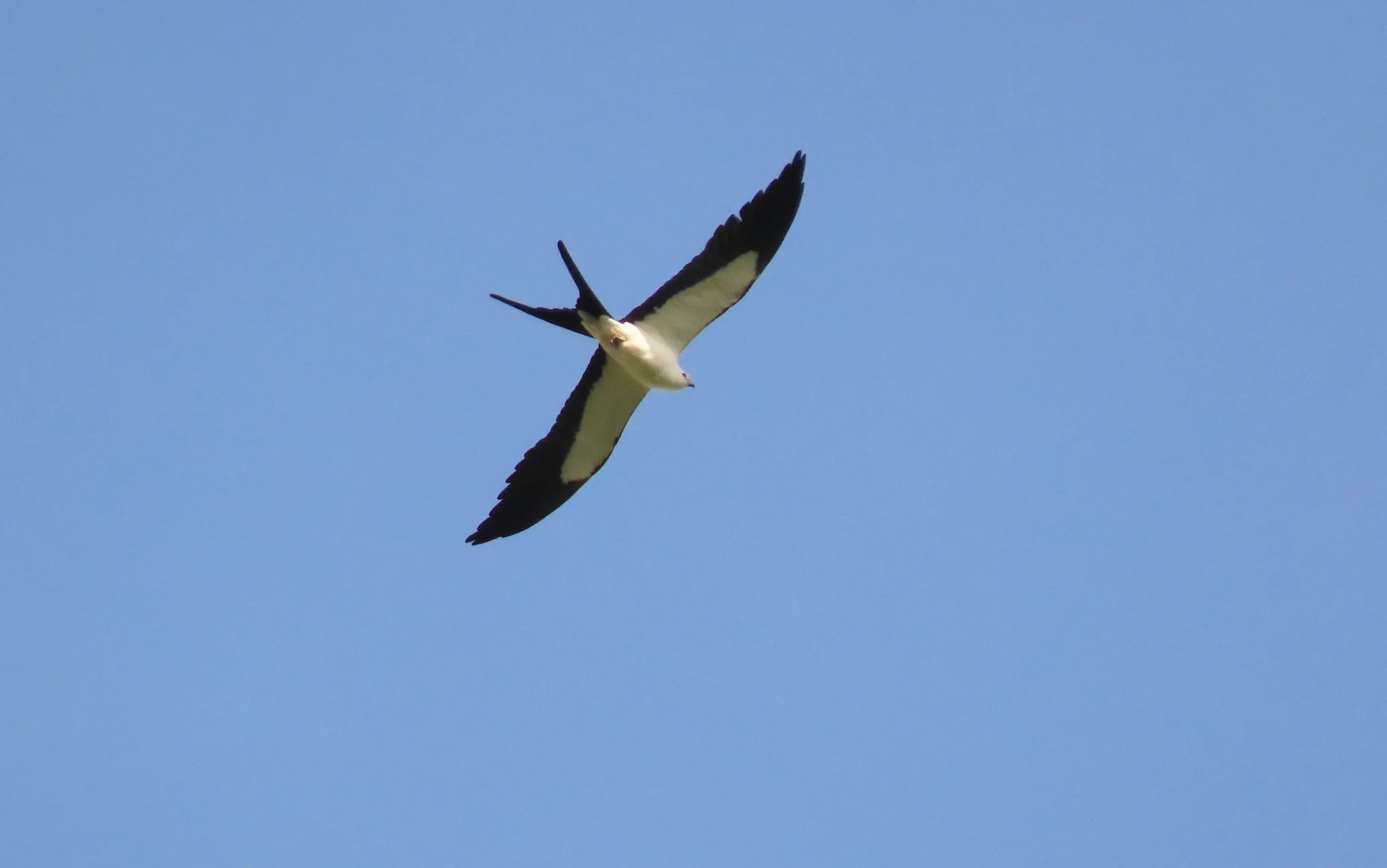Florida is among the premier birding locations for those hoping to observe raptors. Indeed, 28 Florida birds of prey (excluding Florida owls) have been observed in the state. This puts it right up there with the likes of Texas and California regarding the best places to see raptors in the United States.
Although Florida birds of prey are exciting and diverse, it can be difficult to distinguish these birds from one another. Fortunately, this guide to the types of raptors in Florida is just the thing for those hoping to learn about these powerful predators. Without further ado, let’s learn about Florida raptors!
Table of Contents
18 Florida Birds of Prey
American Kestrel
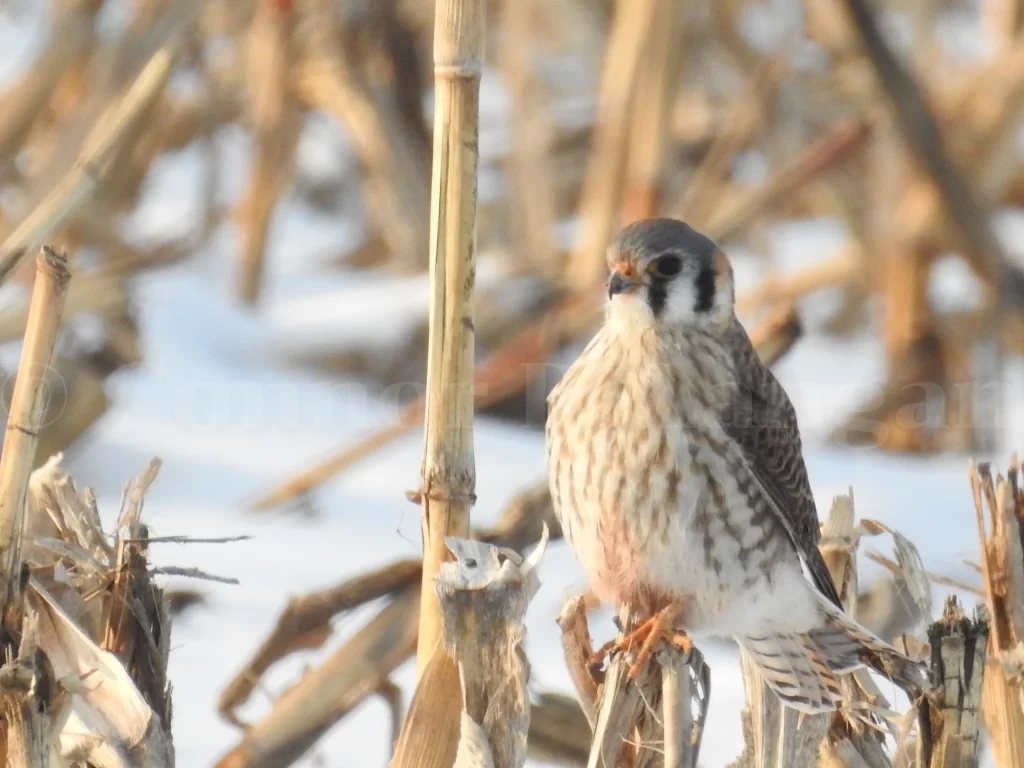
American Kestrels are the smallest Florida birds of prey, weighing only 3 to 6 ounces. They are members of the falcon family, and these small falcons in Florida are familiar to many thanks to their propensity to perch on wires, dead trees, and other obvious locations.
American Kestrels are most numerous in Florida during winter, as considerable amounts spend the winter here before migrating north in spring. Although winter is the best time to observe these birds of prey in Florida, kestrels remain throughout much of the state to breed. American Kestrels are primarily central Florida birds of prey in summer, as their densities are quite low in other parts of the state at this time.
Kestrels are birds that thrive in open habitats. Agricultural land and marshes with dead trees nearby are ideal habitats, but they are adaptable and capable of living in urban environments. They are cavity nesters so they may nest in birdhouses. This Florida bird of prey eats a varied diet that includes large insects like cicadas and dragonflies and small mammals.
Bald Eagle
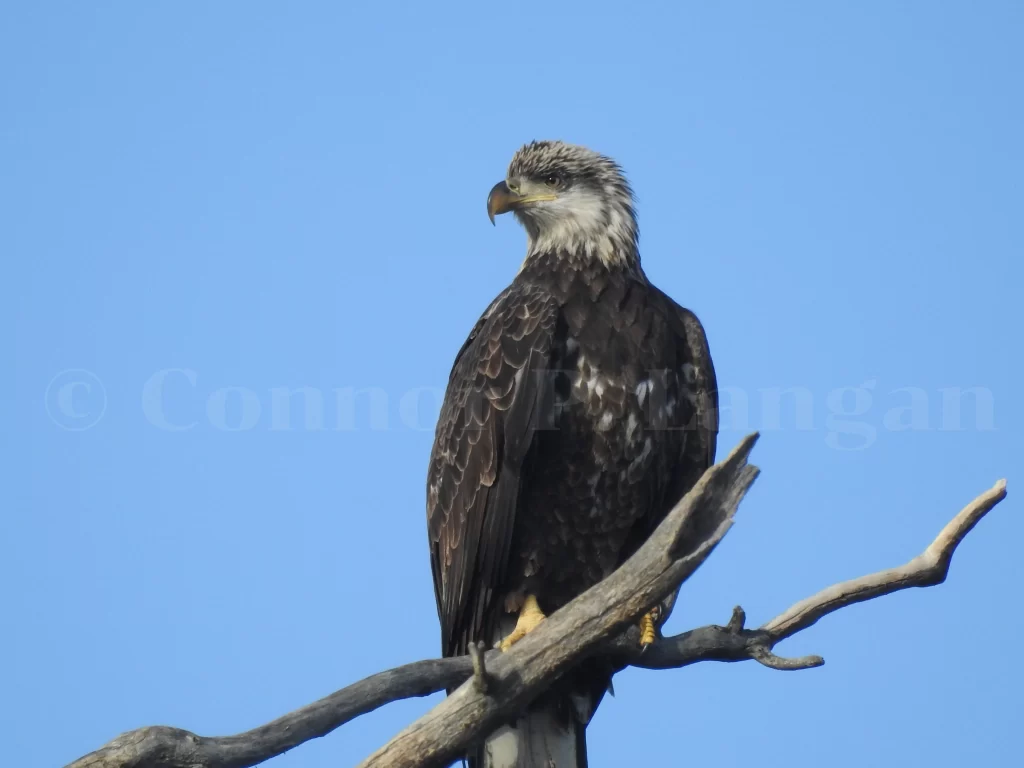
Few raptors in Florida are known more than Bald Eagles, but are there Bald Eagles in Florida? Yes, there are Bald Eagles in Florida! In fact, they are quite common in Florida, as more than 270,000 observations of these large birds of prey in Florida have been submitted to eBird from the state.
Bald Eagles in Florida were long considered to be nonmigratory birds, but ornithologists realized in the 1940s that many eagles that inhabit the state only spend winters here. Indeed, while plenty of Florida eagles breed here, it turns out that the state is also a hotspot for wintering eagles.
Although a few dozen Golden Eagles have been reported in Florida, Bald Eagles are the only types of eagles in Florida that regularly occur. Pairs may establish nests in pine forests or on large radio towers. They will most often be seen near the ocean or adjacent to freshwater ecosystems inland.
Black Vulture
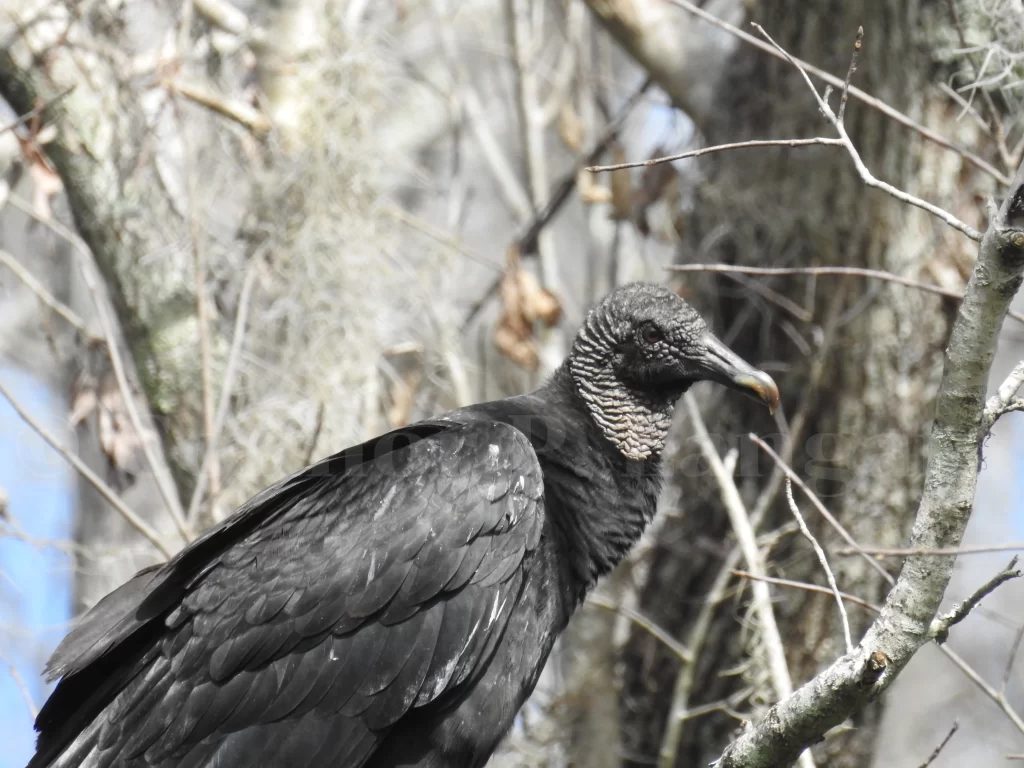
These black birds in Florida can be found throughout the state all year. Black Vultures are not detected as frequently during summer, suggesting that some depart to breed elsewhere before returning to spend winters in Florida.
Black Vultures in Florida can be found kettling by the dozens in the sky when there are favorable winds or an irresistible amount of food. These Florida birds of prey in flight are readily separated from Turkey Vultures thanks to their pale wingtips.
Although many find Black Vultures to be unsavory or even dangerous, they provide a valuable service in that they clean up dead animals. Without creatures like Black Vultures, there would be carrion lying around and decaying everywhere.
Broad-winged Hawk
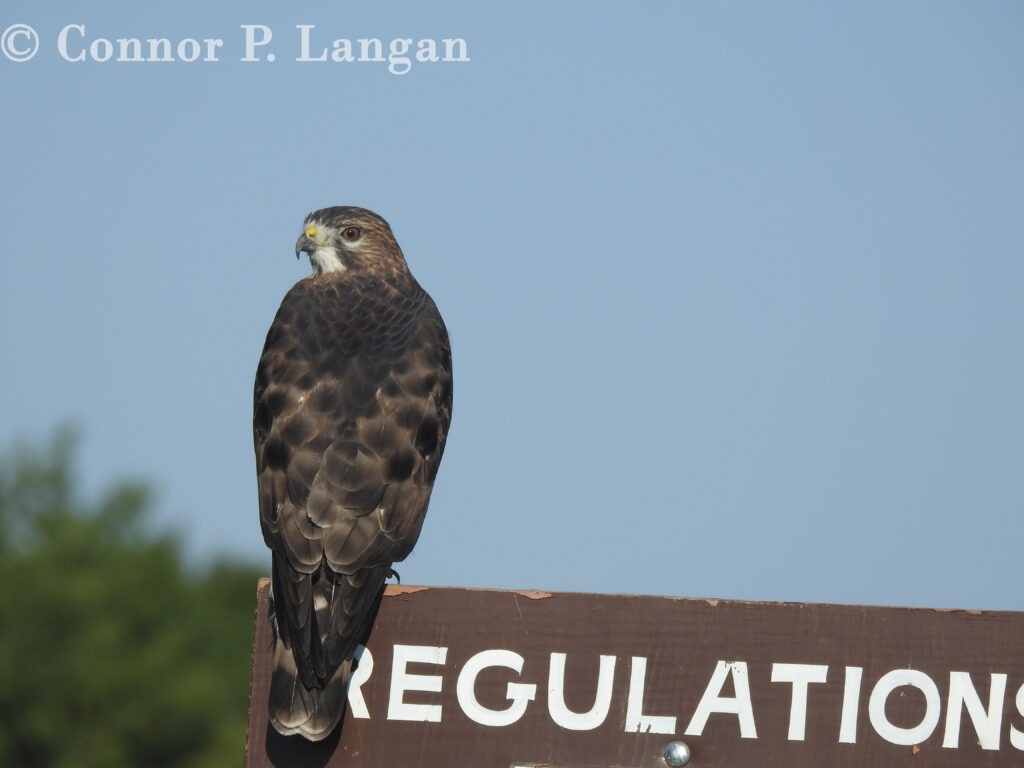
Broad-winged Hawks are the most uncommon types of hawks in Florida on this list, with shy of 13,000 eBird reports being made. Most Broad-winged Hawks in Florida quickly pass through the state on their migrations, spending little time in the state.
However, these raptors in Florida breed in the panhandle in small numbers. Therefore, these north Florida birds are expected in the panhandle during summer, but breeding elsewhere in the state is rare.
Broad-winged Hawks typically seek out deciduous woodlands during the summer breeding season, but they may nest in mixed woodlands. Listen for the high-pitched whistle of these north Florida birds of prey to key you in on their presence.
Cooper’s Hawk
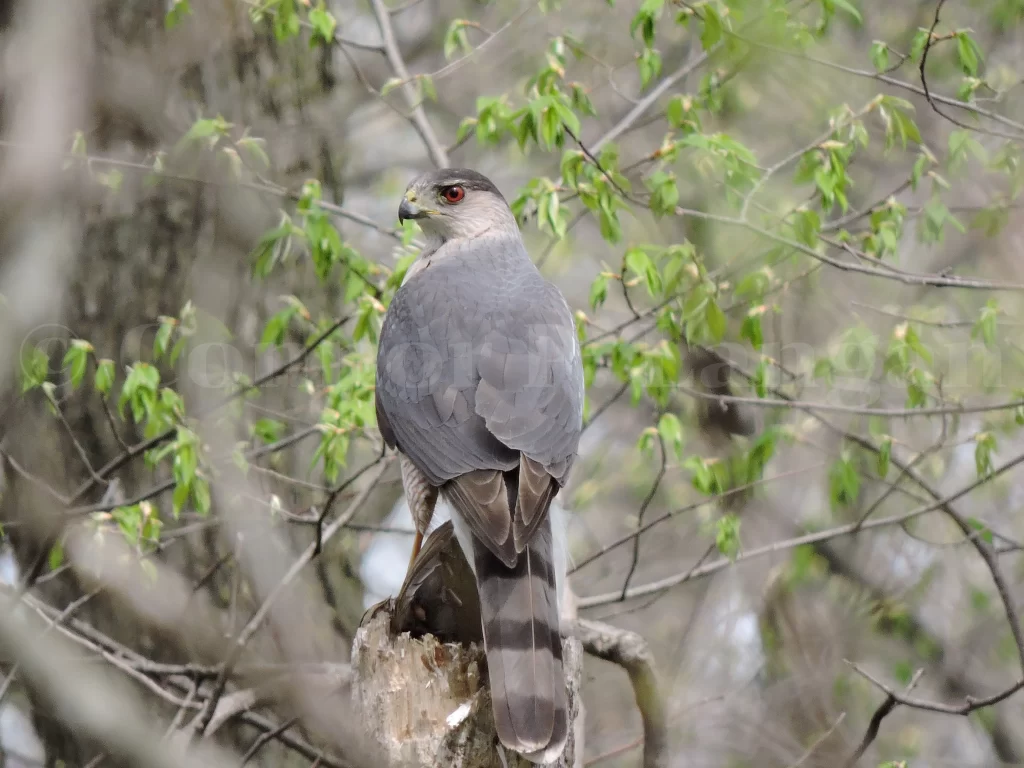
Cooper’s Hawks are regular predatory birds in Florida, being consistently common no matter the time of year. Although they are widespread and numerous, they blend into their surroundings well, and they often keep a low profile.
These Florida birds of prey consume a variety of small Florida birds—much to the dismay of those with backyard bird feeding stations. Cooper’s Hawks will regularly target these areas, as they are a beacon to hungry hawks. Although birds are the preferred prey of Cooper’s Hawks, they may also eat mammals like squirrels.
Look for Cooper’s Hawks in forested neighborhoods, parks, and woodlands. They are not regularly seen in the open, and they seldom perch in open areas for very long. Their flight is fast and direct.
Crested Caracara
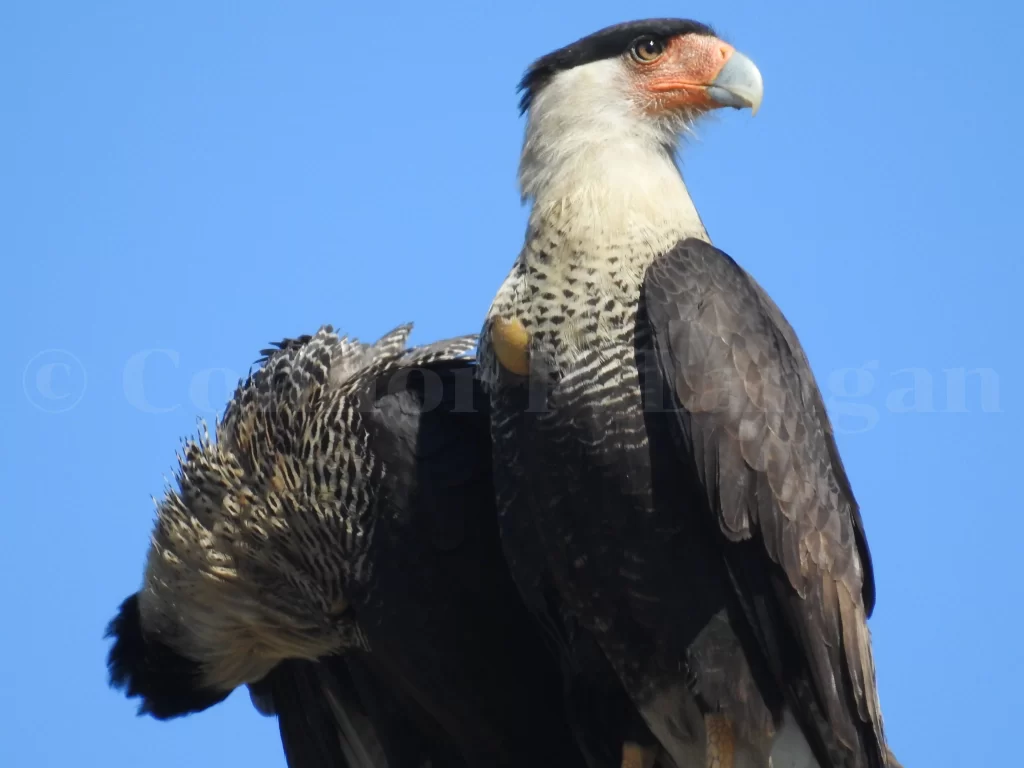
Crested Caracaras are highly sought birds of prey in central Florida. They are one of several types of falcons in Florida. However, these Florida birds with long legs aren’t likely to remind you of their fast-flying falcon relatives.
Crested Caracaras have adapted to hunt small animals, with reptiles making up a good portion of their diets. They use their long legs to strut along the ground and scamper after potential prey. Although they readily prey on live creatures, they are also birds that eat dead animals. Open areas such as grasslands and marshes make for good habitat for these creatures.
These Florida raptors are absent from the Florida Panhandle and Florida Keys, making them central Florida specialties. They are nonmigratory, but some birds wander north into other states. However, the best bet in terms of seeing one in Florida would be to head south of Orange City.
Merlin
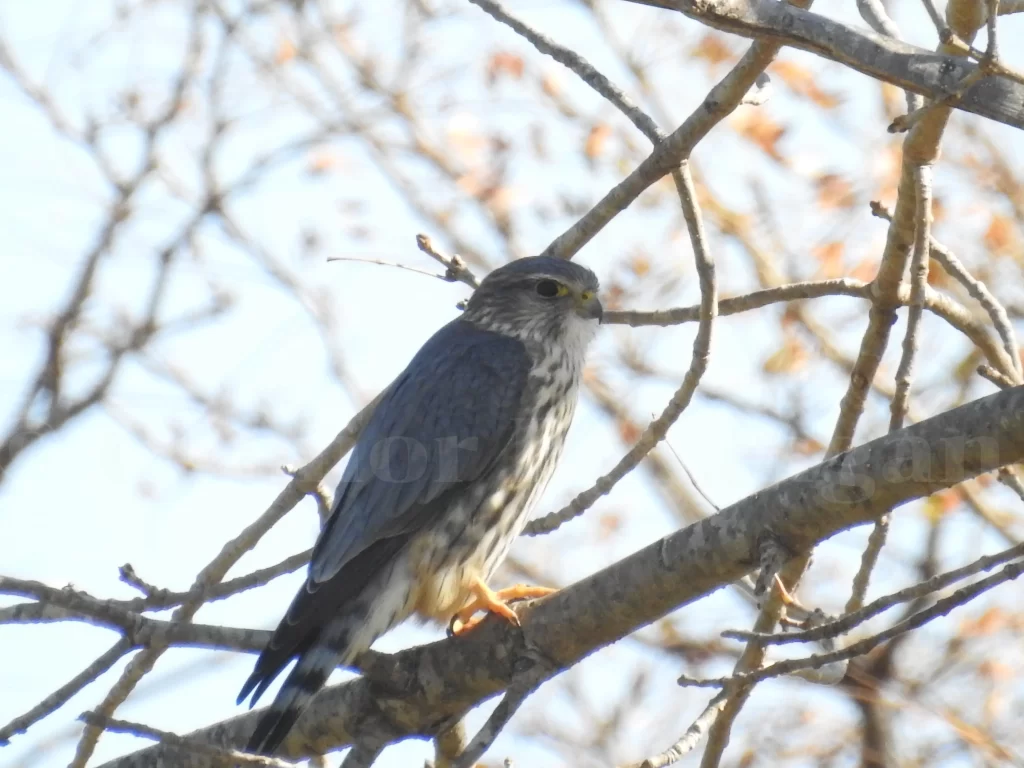
Merlins are a Florida falcon that ventures to the state during winter. Come spring, these predatory birds in Florida begin to head north, with most being gone by April. After breeding hundreds—perhaps thousands—of miles away, they return to Florida in the fall.
With their streamlined bodies, these Florida birds of prey are built for speed. Their diets are primarily centered around other birds, so they’ll readily snatch unsuspecting small backyard birds.
Like other falcons in Florida, Merlins often perch in open, obvious perches when they’re scanning for prey. Therefore, dead trees, utility poles, and buildings may be good vantage points for these native Florida birds.
Mississippi Kite
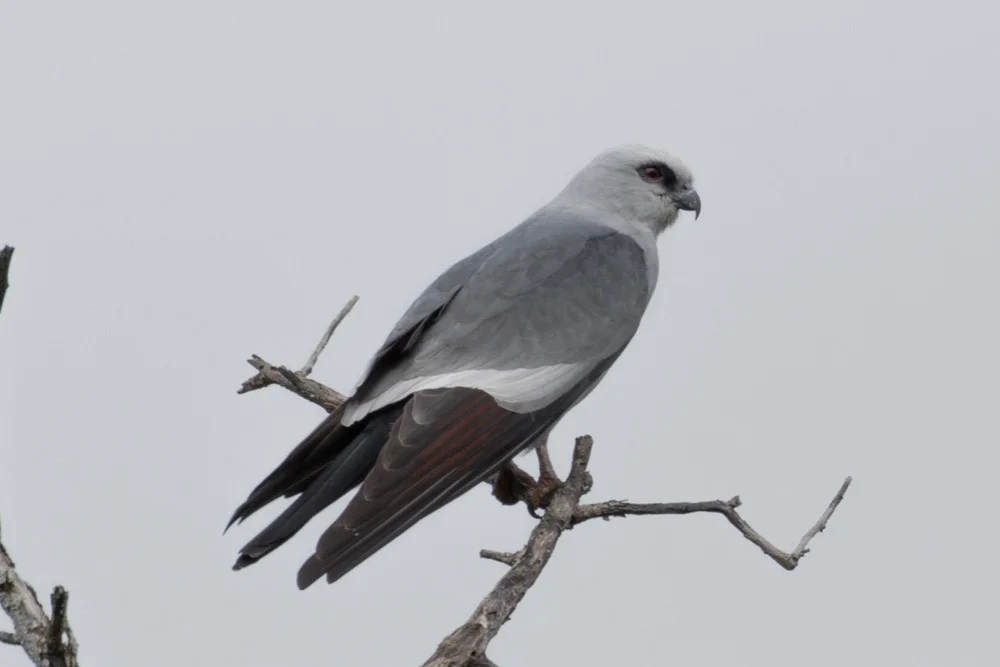
Mississippi Kites are fairly rare Florida birds, with only about 21,500 eBird reports containing records of this species from Florida. However, these birds of prey in Florida do breed in the northern half of the state. Anywhere north of Tampa and Lakeland seems to be within the breeding range of this species.
Mississippi Kites are seen in flight far more often than perched. They have long, narrow wings and gray bodies, and they may be observed flying far from their nest sites as they search for prey such as small mammals, birds, reptiles, and insects.
Mississippi Kites breed in groves of trees where they have plenty of cover from species like crows that may otherwise harass them. Most of these Florida raptors leave the state by the end of August.
Northern Harrier
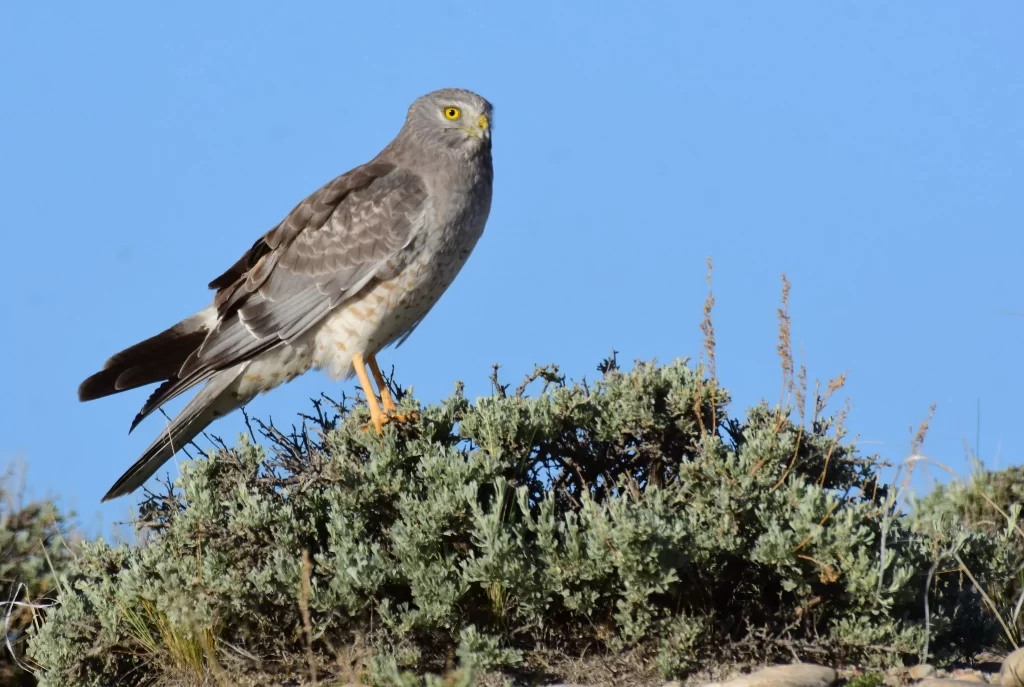
Northern Harriers are regular winter residents in Florida. Although there are several dozen summer records of this species in the state, breeding has not been confirmed for these large Florida birds.
Northern Harriers take to open areas around the state in winter where they glide around searching for small mammals or birds to eat. They do not perch in trees, instead landing on the ground when they eventually decide to take a break from their effortless-looking flight. Although they may be especially active at dawn and dusk, they do not hunt at night.
Northern Harrier numbers begin to decline substantially after mid-March and almost all have left the state by May. They return in good numbers during October. Northern Harriers are one of two sexually dimorphic Florida birds of prey on this list.
Osprey
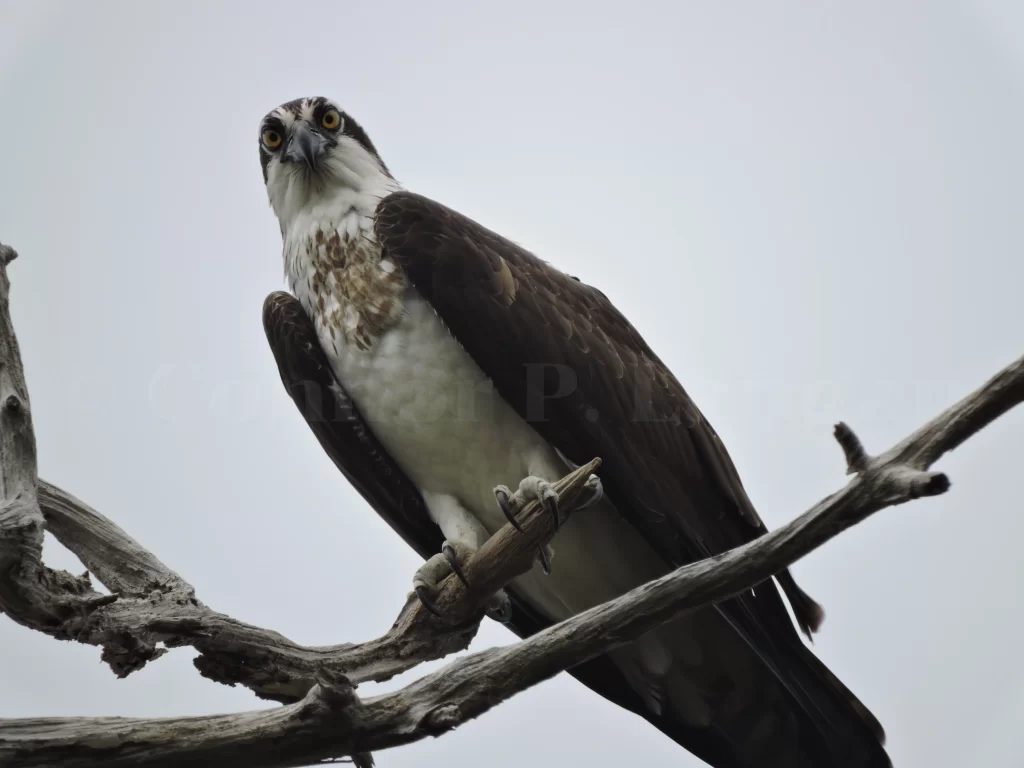
Ospreys are among the most common birds of prey in Florida, with nearly 800,000 eBird reports that include these species being submitted in the state. Indeed, Ospreys are abundant year-round, and although some migrate northward in spring, many remain to breed in the state.
Ospreys—also known as “fish hawks”–are easily found in most areas near water. Of course, given that oceans and freshwater ecosystems abound in the Sunshine State, it should be no surprise that Ospreys are quite common.
Ospreys are skilled anglers, and a single bird can easily capture several fish every day by plunging into the water with talons outstretched. Listen for the high-pitched chirping calls of Ospreys coming from pine trees as pairs communicate about the happenings at their nests.
Peregrine Falcon
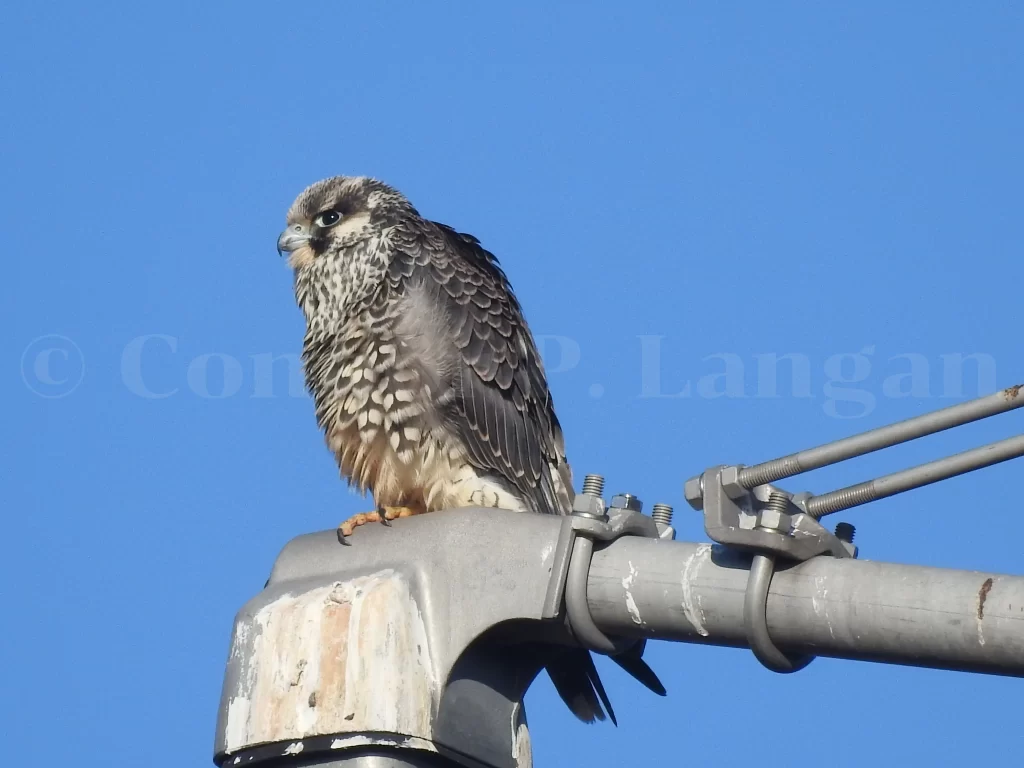
Of all the hawks and falcons in Florida, Peregrine Falcons are the fastest. These sizable Florida raptors use their streamlined bodies and powerful wings to pulverize unsuspecting prey such as pigeons, waterfowl, or shorebirds.
While Peregrine Falcons are a fascinating sight, they are only present in Florida during winter. Although a handful of summer records exist, all reports involve single birds and no breeding in the state has been suspected.
Peregrine Falcons can excel around beaches, marshes, or bustling urban environments. Anywhere with enough food to support one of these creatures can serve as a viable winter habitat.
Red-shouldered Hawk
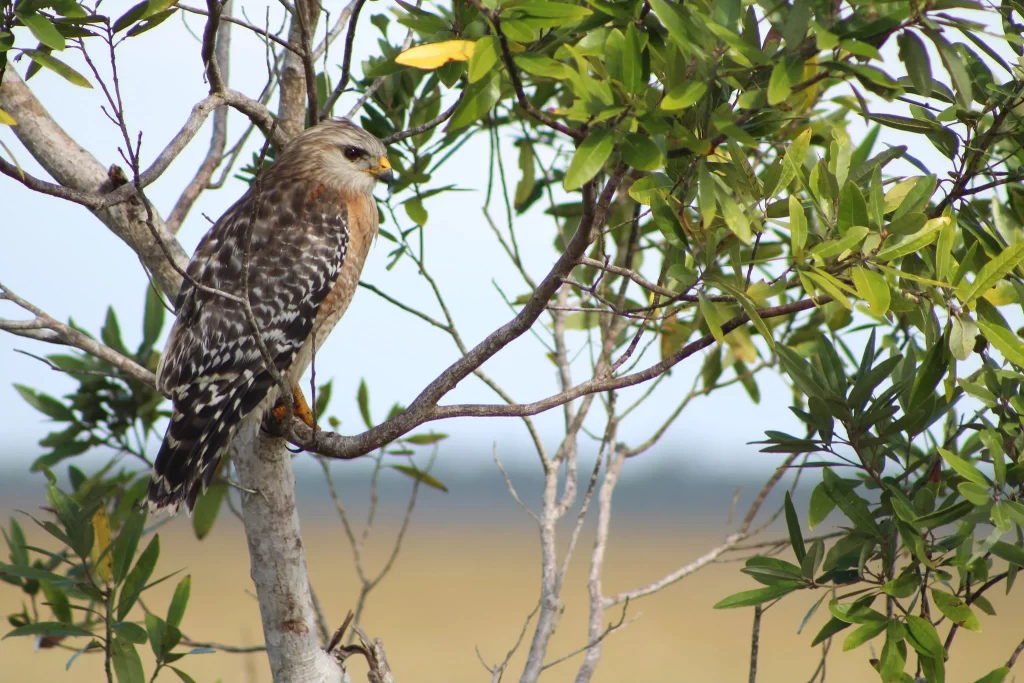
Red-shouldered Hawks in Florida are part of a different subspecies than those in the remainder of the country. Here, Red-shouldered Hawks have heads that are much paler compared to their counterparts elsewhere.
Red-shouldered Hawks are widespread and expected in Florida, as these birds thrive in the swampy woodlands that can be found in much of the state. It is here that they hunt small vertebrates and proclaim their territory with their screeching calls.
Red-shouldered Hawks in Florida are nonmigratory, so if you’ve got one near your property, it will likely stick around. Adults are easy to identify thanks to their pale heads and red feathers, but immature birds can look a lot like Broad-winged Hawks.
Red-tailed Hawk
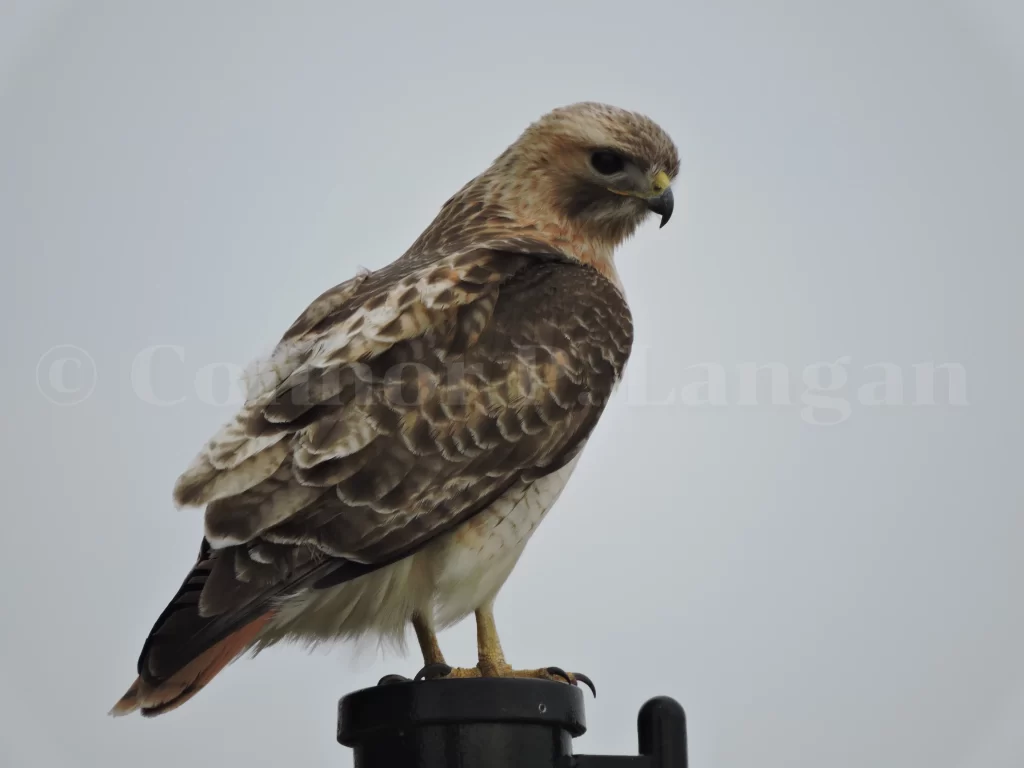
Despite their abundance in most other parts of the United States, Red-tailed Hawks are far from the most numerous of the birds of prey in Florida. In fact, less than 100,000 eBird checklists have included this species in Florida.
Other Florida raptors are simply better adapted to thrive in the hot, humid Florida conditions compared to Red-tailed Hawks. This species certainly enjoys plenty of breeding success in the state, but they have more suitable habitat in more northerly locales.
Red-tailed Hawks are pretty consistent in their numbers no matter the time of year, therefore, it does not seem that many migrants overwinter in Florida. Red-tailed Hawks are readily found in semi-open habitats where they can often be seen soaring through the air. Although they are large and imposing, there is no need for humans to fear Red-tailed Hawks. These creatures eat a variety of prey items that can be as large as domestic cats.
Sharp-shinned Hawk
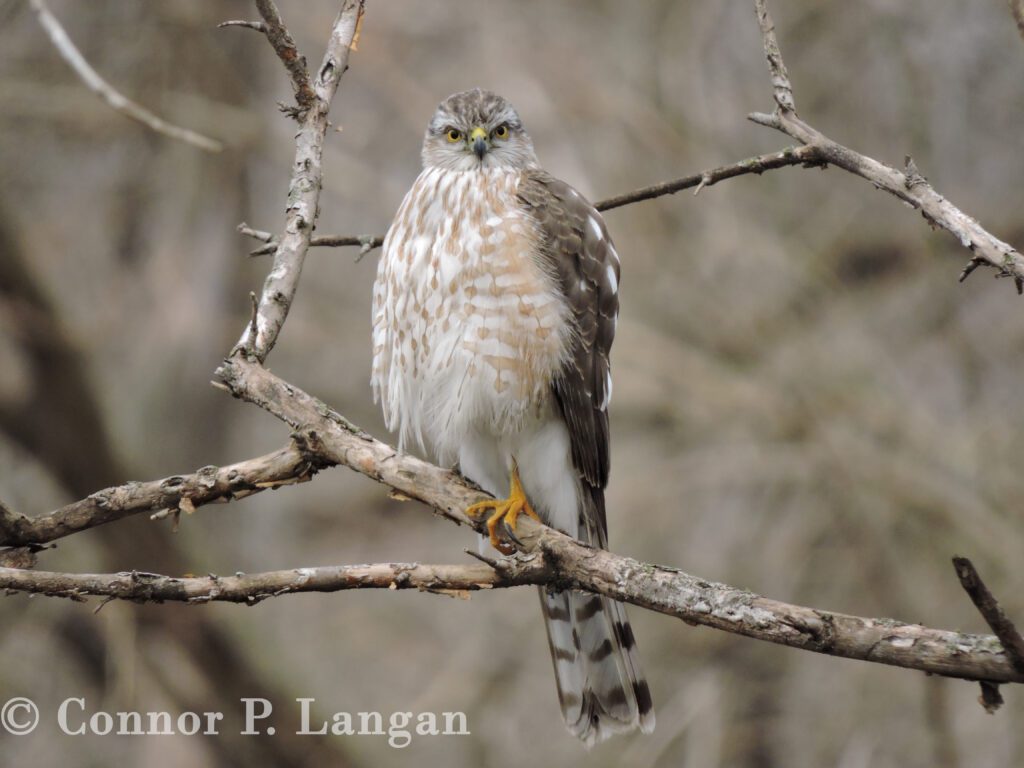
Sharp-shinned Hawks are uncommon winter residents. These tiny birds of Florida can be found in decent numbers throughout the winter, but come spring, they head north to breed hundreds of miles away. Despite a few summer records existing, it is not believed that Sharp-shinned Hawks nest in Florida.
Sharp-shinned Hawks are fierce for their small size. They pursue a variety of avian quarry, being able to take prey as large as a dove. Although they are quite similar to Cooper’s Hawks, note their smaller size and proportionately smaller heads.
These Florida birds of prey feel at home in stands of trees, as their small size and shape allow them to navigate through dense vegetation with ease as they chase after birds.
Short-tailed Hawk
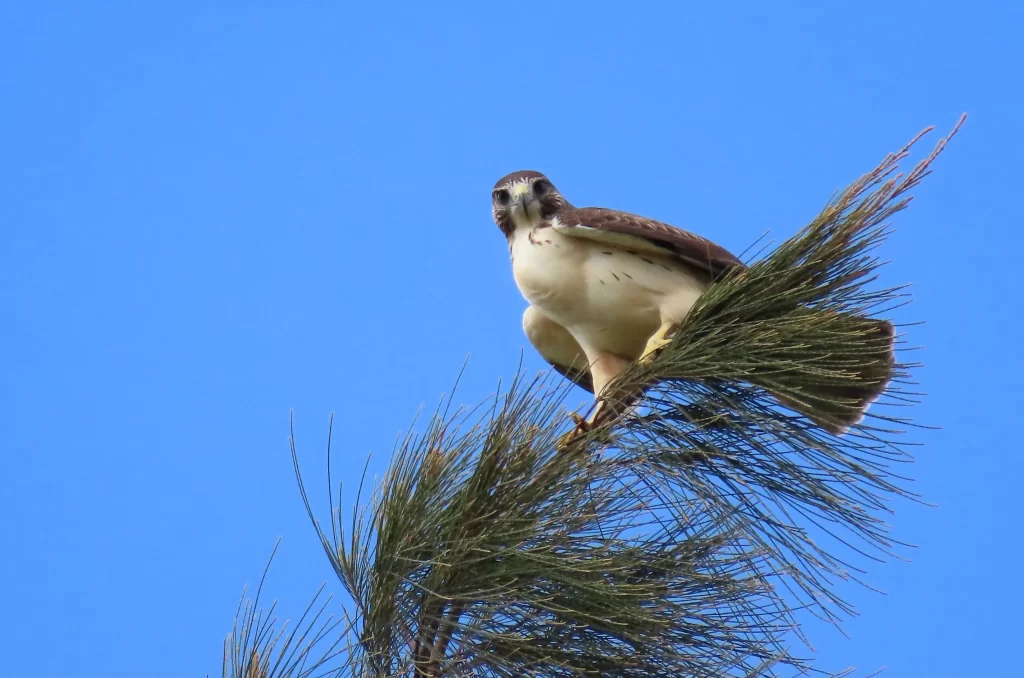
Short-tailed Hawks are medium-sized Florida raptors that come in both a light and dark morph. They are one of the state’s many specialty birds, as they are rarely found north of Florida. In fact, they are absent from the panhandle, with records there being rare.
These Florida raptors are most commonly seen in flight. At first glance, their silhouette looks much like a Red-tailed Hawk or Red-shouldered Hawk. However, pay attention to the tail, as it contains faint bands of color.
Short-tailed Hawks are bird-eating specialists. To find their prey, they fly high in the sky until they spot their prey below. They will then dive down on the unsuspecting prey and make the kill. Florida’s population of Short-tailed Hawks numbers about 500.
Snail Kite
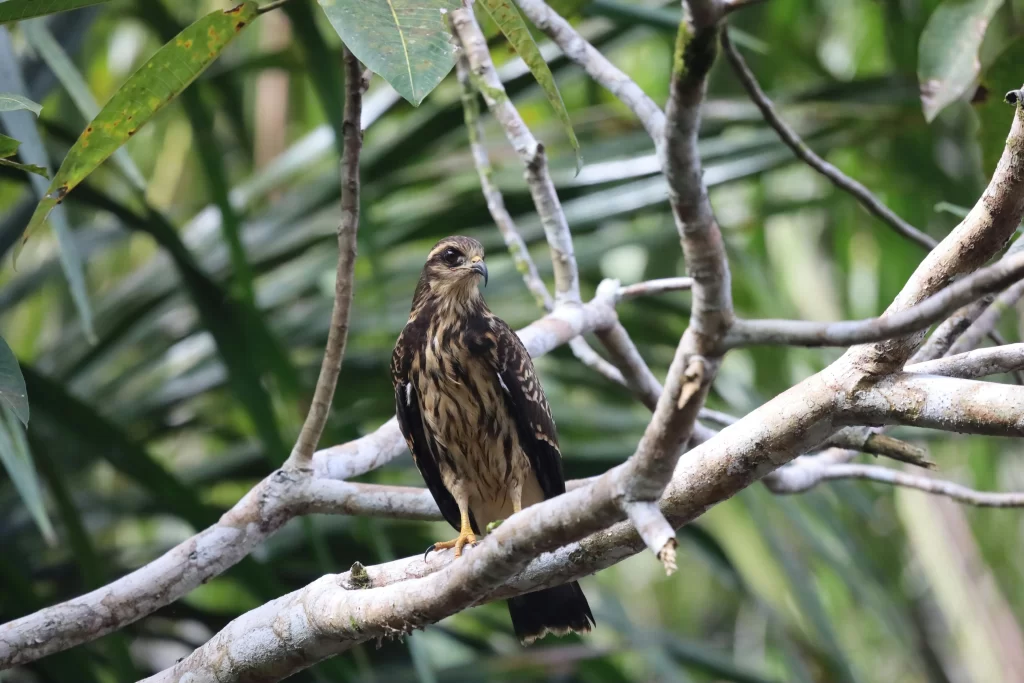
Snail Kites are perhaps the most fascinating raptors in Florida. Indeed, these birds have evolved to feed exclusively on snails – not very fierce. However, they are nonetheless birds of prey, and Florida is the only state in the United States where they breed.
Snail Kites live year-round in Florida. Here, they seem to be doing quite well, and the population may be expanding northward in the state. The furthest north breeding population presently exists around Gainesville.
Unsurprisingly, Snail Kites inhabit marshes and other wetland habitats that support large numbers of snails. Snail Kites are the second sexually monomorphic Florida bird of prey on this list, with males being dark gray and females being pale and streaked.
Swallow-tailed Kite
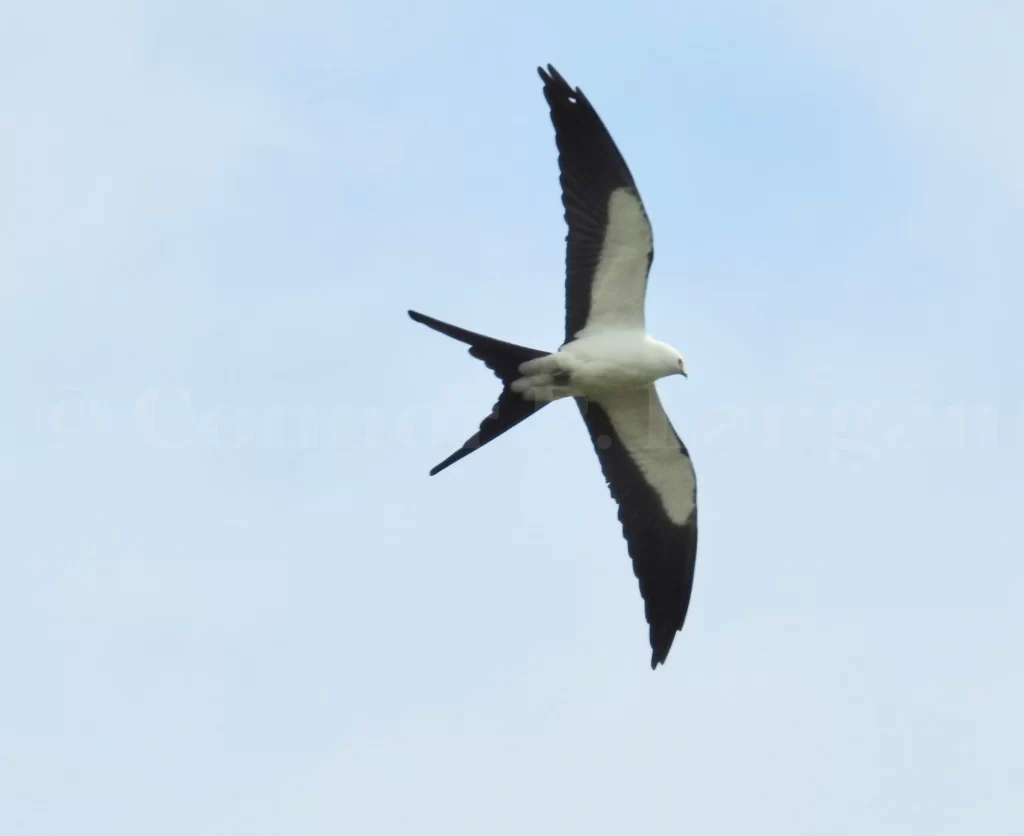
Few birds are as captivating as a flying Swallow-tailed Kite. Indeed, watching one of these graceful raptors fly through the sky is an awe-inspiring experience. Fortunately, Swallow-tailed Kites are common summer residents.
Swallow-tailed Kites usually return in March, but this early arrival time means that they’re ready to head back south by August. They are among the easiest birds of prey in Florida to identify from this list when viewed in flight thanks to their forked tails.
When they’re not soaring through the sky, look for them around wooded habitats. Here, they prey on amphibians, reptiles, small mammals, birds, and insects. They often roost communally.
Turkey Vulture
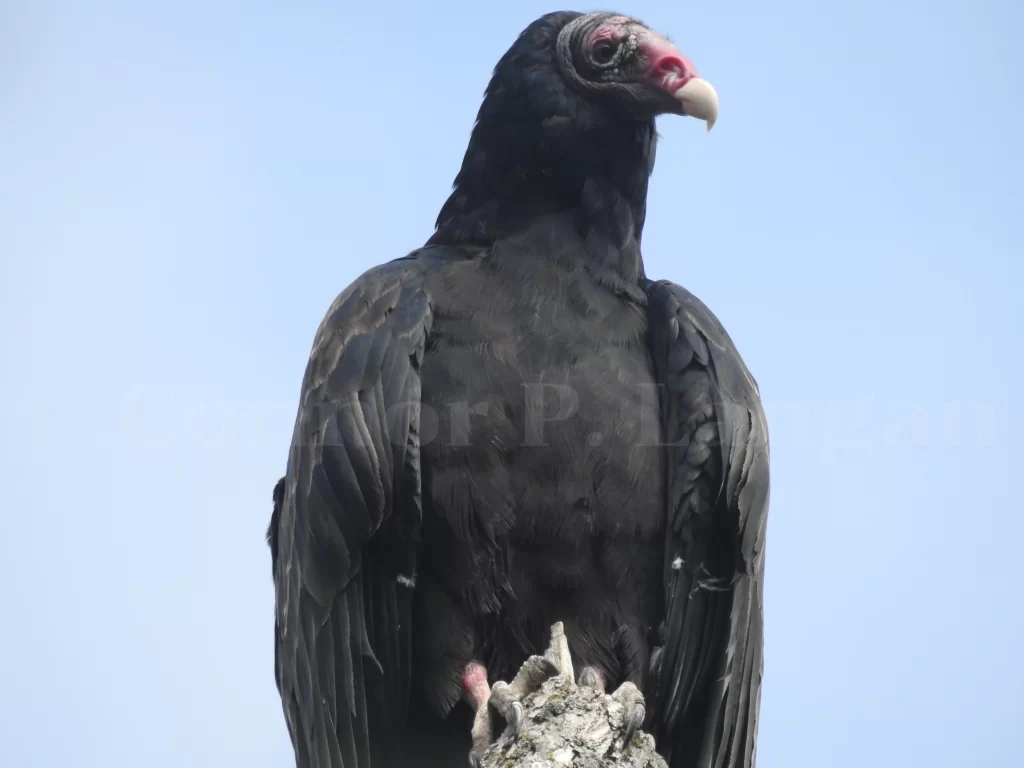
With more than 850,000 eBird reports, Turkey Vultures are the most common Florida birds of prey on this list. Indeed, it is hard to miss these birds when you travel to Florida, as they are seemingly everywhere when you look up into the sky.
Turkey Vultures are present in Florida throughout the year. Numbers certainly go down in the summer, but there are still plenty of Turkey Vultures here this time of year. It’s thought that Turkey Vultures are better at finding carrion than Black Vultures thanks to excellent senses of smell, so Black Vultures often find dead animals by looking for Turkey Vultures.
Turkey Vultures can be found anywhere in the state. They may feed on fish on beaches, deer in forests, and everything in between. They can easily be identified in flight thanks to their two-toned wings and the dihedral in which they hold their wings.

